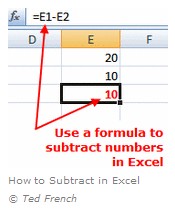Though the signs now seem as familiar as the
alphabet or the
Hindu-Arabic numerals, they are not of great antiquity. The
Egyptian hieroglyphic sign for addition, for example, resembled a pair of legs walking in the direction in which the text was written (
Egyptian could be written either from right to left or left to right), with the reverse sign indicating subtraction:
[citation needed]
 | or |  |
|
|
In Europe in the early 15th century the letters "P" and "M" were generally used.
The symbols (
P with stroke for piu, i.e., plus, and M with stroke for meno, i.e., minus) appeared for the first time in
Luca Pacioli’s mathematics compendium,
Summa de arithmetica, geometria, proportioni et proportionalità, first printed and published in
Venice in 1494.
The
+ is a simplification of the Latin "et" (comparable to the
ampersand &).
[citation needed] The
− may be derived from a
tilde written over
m when used to indicate subtraction; or it may come from a shorthand version of the letter m itself.
[citation needed] In his 1489 treatise
Johannes Widmann referred to the symbols − and + as
minus and
mer (Modern German
mehr; "more"): "das − ist, das ist minus, und das + ist das mer".
A book published by
Henricus Grammateus in 1518 makes another early use of + and − for addition and subtraction.
Minus sign
The minus sign has three main uses in mathematics:
- The subtraction operator: A binary operator to indicate the operation of subtraction, as in 5 − 3 = 2. Subtraction is the inverse of addition.
- Directly in front of a number and when it is not a subtraction operator it means a negative number. For instance −5 is minus 5.
- A unary operator that acts as an instruction to replace the operand by its opposite. For example, if x is 3, then −x is −3, but if x is −3, then −x is 3. Similarly, −(−2) is equal to 2.
All three uses can be referred to as "minus" in everyday speech. In modern US usage, −5 (for example) is normally pronounced "negative five" rather than "minus five". "minus" may be used by speakers born before 1950, and is still popular in some contexts, but "negative" is usually taught as the only correct reading.
In most other parts of the English-speaking world, "minus five" is more common. Textbooks in America encourage −
x to be read as "the opposite of
x" or even "the additive inverse of
x" to avoid giving the impression that −
x is necessarily negative.
In some contexts, different glyphs are used for these meanings; for instance in the computer language
APL a raised minus sign is used in negative numbers (as in 2 − 5 gives
−3), but such usage is rare.
In mathematics and most programming languages, the rules for the
order of operations mean that −5
2 is equal to −25. Powers bind more strongly than multiplication or division which binds more strongly than addition or subtraction. While strictly speaking, the unary minus is not subtraction, it is given the same place as subtraction. However in some programming languages and
Excel in particular, unary operators bind strongest, so in these −5^2 is 25 but 0−5^2 is −25.
Other uses
The minus sign is also used as tone letter in the orthographies of
Dan,
Krumen,
Karaboro,
Mwan,
Wan,
Yaouré,
Wè,
Nyabwa and
Godié.
The Unicode character used for the tone letter (U+02D7) is different from the mathematical minus sign.




